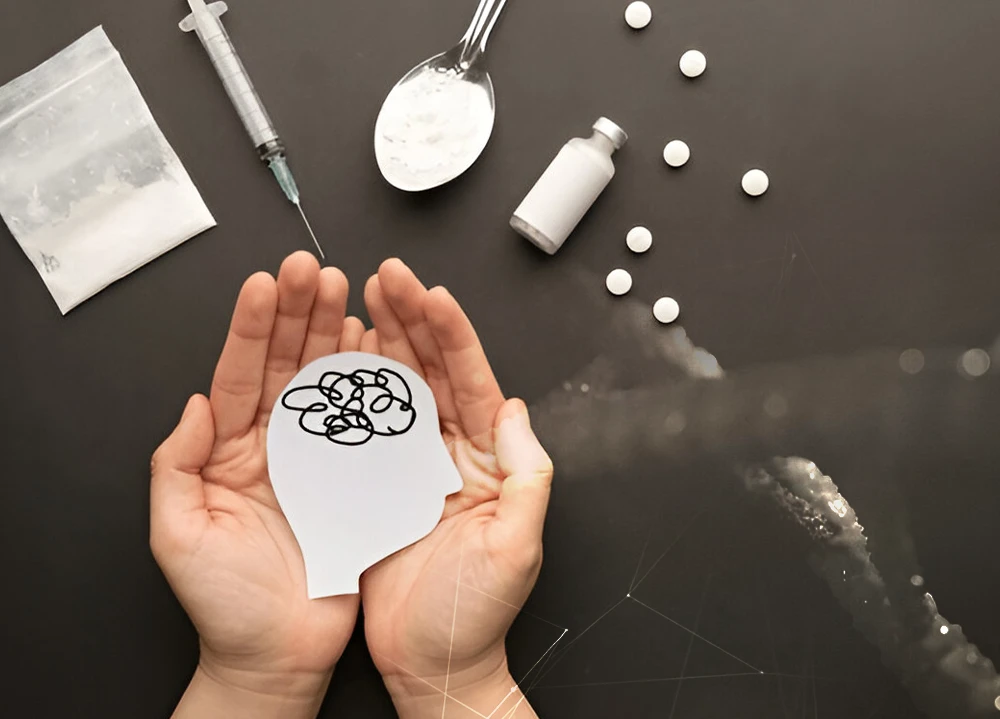

Are You Born to Be Addicted? Your DNA Might Hold the Answer
- How Genes Influence Brain Function and Risk
- The Power of Early Onset and Genetic Vulnerability
- Shared Genetic Traits across Multiple Addictions
- Genetic Risks of Addiction: The Role of Environment Still Matters
- Why Some Addiction Treatments Work Better for Certain People
- The Future of Addiction Screening and Prediction
- Genetic Testing Can Support Prevention, Not Replace It
- One Genetic Test Can Change the Timeline
Addiction can look like a choice from the outside. But inside the body, the story starts much earlier. Decades of research now show that biology plays a measurable role in how a person responds to drugs, alcohol, or compulsive behaviors. And the clearest clues are written in the genome.
Genes shape the way the brain processes reward, controls impulses, and handles stress. When key pathways are altered from birth, they can change how someone reacts the first time they drink, smoke, or use. These inherited traits do not guarantee a future of substance use.
But they do create conditions where addiction may build faster, hit harder, and resist recovery longer.
How Genes Influence Brain Function and Risk
It has been reported that “genetic factors account for between 30% and 60% of a person’s risk for developing a substance use disorder.” That range varies by drug type, age of first exposure, and coexisting mental health conditions.
The most affected brain systems involve dopamine signaling. Genes like DRD2, which regulate dopamine receptors, influence how strongly a person feels reward from stimuli. Variants in OPRM1, which impact opioid receptors, shift how pain relief and pleasure are processed. A person carrying certain versions of these genes may experience amplified cravings and reduced impulse control.
A study published by the University of Michigan identified over 19 genetic markers tied to addiction-related behaviors. Many were located in areas of the genome involved in learning, memory, and reinforcement.
The Power of Early Onset and Genetic Vulnerability
Genetic testing has helped uncover how early use interacts with inherited risk. People with a family history of substance use often show earlier initiation and faster progression to dependence. According to the American Addiction Centers, those who begin using drugs or alcohol in adolescence are far more likely to meet the criteria for addiction later in life, especially if their DNA carries known vulnerability factors.
Key developmental genes influence how the brain matures during critical windows. If those genes are altered, judgment, planning, and emotional regulation may not develop as robustly. That leaves the brain more exposed to the effects of drugs, even in small amounts.
A recent study emphasized that early exposure does not act alone. It interacts with inherited differences in stress response and neurotransmitter regulation, amplifying the likelihood of chronic use and relapse.
Shared Genetic Traits across Multiple Addictions
One of the most striking findings in recent years comes from research into shared genetic traits. A study from the NIH revealed that several markers appear across substance categories, from alcohol and nicotine to opioids and cannabis. These genes are involved in:
- Glutamate transmission
- GABA receptor function
- Serotonin regulation
- Neurodevelopmental signaling
The overlap suggests that addiction may arise from a common biological pathway rather than isolated systems for each drug. The study identified shared variants in FOXP2, CHRNA5, and CADM2, among others.
This could explain why many individuals transition between substances. The behavior may shift, but the underlying biology remains constant.
Genetic Risks of Addiction: The Role of Environment Still Matters
Even when genetic risk is present, exposure shapes the outcome. A person raised in a low-stress, high-support environment may never develop addictive behaviors, despite their DNA. On the other hand, someone with low genetic risk may struggle if exposed to trauma, poor mental health care, or frequent substance use in the home.
The Cleveland Clinic notes that both nature and nurture shape outcomes, but DNA sets the baseline. Once that foundation is in place, environmental forces either stabilize or destabilize the system.
The Rutgers research team echoed this in a 2023 review: genetic risk does not remove accountability, but it does reshape expectations around prevention and recovery.
Why Some Addiction Treatments Work Better for Certain People
Response to treatment varies widely, and genetics plays a part in that too. A person’s genetic makeup can change how they respond to medications like naltrexone or methadone. Variants in genes like CYP2D6 and COMT affect how quickly drugs are metabolized, how side effects are tolerated, and how well cravings are reduced.
A research on addiction pharmacogenetics shows that matching treatments to genetic profiles improves engagement and reduces dropout rates.
By identifying which pathways are involved in a person’s addiction cycle, clinicians can select therapies that target those exact areas. This improves outcomes, especially for individuals who have failed traditional programs.
Additional insights from genetic testing
- Identification of ultra-rapid metabolizers who may clear medications too quickly for standard dosing protocols
- Detection of enzyme deficiencies that heighten the risk of side effects during detox or maintenance therapy
- Recognition of receptor-level resistance that reduces the benefit from standard medications
- Discovery of inherited sensitivity to antidepressants, often used alongside addiction medications
- Differentiation between individuals who need behavioral intervention first and those who require pharmacological stabilization
- Forecasting of relapse patterns based on stress-response markers that can shape aftercare plans
The Future of Addiction Screening and Prediction
Genetic testing as an early warning system
Genetic testing will not replace clinical assessment, but it is becoming a stronger tool in the early identification of high-risk individuals. According to WebMD, some direct-to-consumer tests already screen for dopamine receptor variants and opioid sensitivity. These tests are still limited in scope, but their accuracy is improving with better data sets and wider genomic studies.
Polygenic risk scores and predictive modeling
The European Journal of Psychiatry published a review showing that polygenic risk scores can now estimate the likelihood of addiction development with increasing accuracy, especially when combined with behavioral and demographic data.
Population screening and early intervention
Screening at a population level may one day guide early interventions for teens, long before substances enter their lives. With advancing tools, risk could be identified before patterns form, shifting prevention closer to biology.
Genetic Testing Can Support Prevention, Not Replace It
DNA provides insight. It gives context to behavior, resistance, and relapse. But the goal isn’t to label someone. The goal is to equip them with accurate information.
Knowing you carry a variant linked to reward sensitivity or poor impulse control can guide choices around alcohol, stimulants, or even caffeine. It can inform how parents talk to children, how therapists structure care plans, and how medical providers approach chronic pain management.
One Genetic Test Can Change the Timeline
If addiction runs in your family, or if past experiences suggest an unusual sensitivity to substances, genetic testing may offer the clarity you need. Lifecode provides a secure, at-home genetic testing kit that analyzes the genes most often linked to addiction vulnerability.
You’ll collect a cheek swab in minutes, return it in the prepaid kit, and receive a full report. Each result is reviewed with a trained Lifecode counselor who explains what your profile reveals and what can be done about it.
The earlier you understand your biology, the earlier you can act on it. Start with one step. Take the test. Shift the timeline

Can You Inherit Migraine Risk The Truth About Women’s Brain Health
Can You Inherit Migraine Risk The Truth About Women’s Brain Health The Genetic Link to Migraines, It Is More Than Just Bad Luck Why Women are More...


Unlocking Your Body’s Blueprint: Genetic Clues to Pregnancy Complications and Hypertension
Unlocking Your Body's Blueprint: Genetic Clues to Pregnancy Complications and Hypertension The Intricate Dance of Genes and Health Decoding Pregnancy Complications Through Genetics The Genetic Roots of...

Education: Bachelor of Pharmacy (B.Pharm) from the Tata Institute of Social Sciences (TISS), Mumbai Experience: Agarwal is a seasoned pharmacist with over 7 years of experience in the pharmaceutical field. She has worked in various settings, including hospital pharmacies and community clinics, where she has excelled in medication management, patient counseling, and clinical support. Agarwal is known for her expertise in drug therapy optimization and patient safety. In addition to her practical experience, she contributes to health journalism, focusing on pharmaceutical advancements and health policy, and is involved in research projects aimed at improving medication practices and health outcomes. is known for her expertise in drug therapy optimization and patient safety. In addition to her practical experience, she contributes to health journalism, focusing on pharmaceutical advancements and health policy, and is involved in research projects aimed at improving medication practices and health outcomes.


